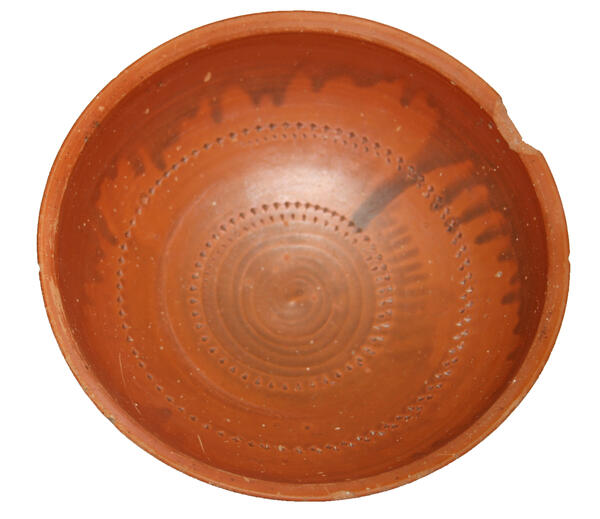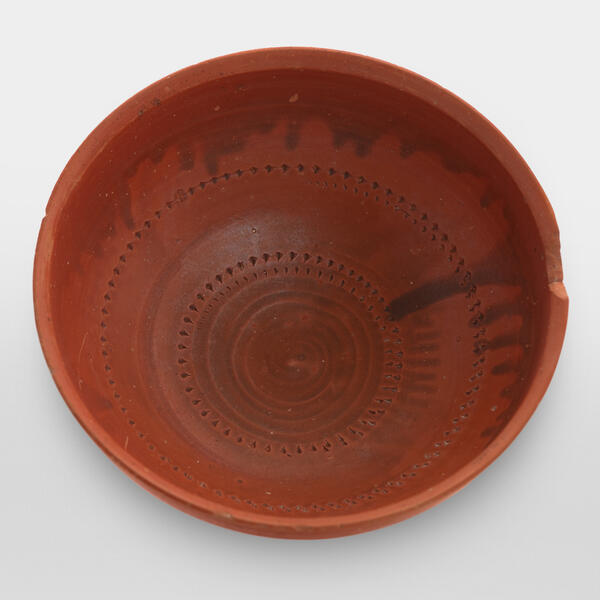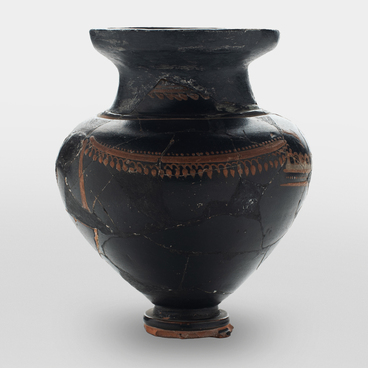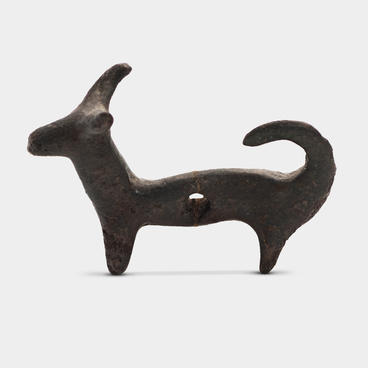The exhibition of the Tanais Archaeological Museum-Reserve features a red-lacquered bowl found in the necropolis of the Nizhne-Gnilovsky settlement. This bowl is a typical example of tableware used for various purposes. It is a valuable artifact that provides insight into the culture and way of life of the ancient inhabitants of the Tanais region.
The bowl has a domed shape with a narrow, circular tray. This design makes it comfortable to hold the bowl in one’s hand and use it as a drinking vessel. The edge of the bowl is slightly beveled and turned inward, also ensuring comfortable use. The inner bottom of the bowl is slightly convex and has relief concentric circles, enhancing the bowl’s strength and appearance. The surface of the bowl is decorated with diamond-shaped stamps in one row near the center of the body and triangular stamps closer to the bottom. This pattern is repeated in two rows, creating a harmonious and symmetrical effect. These patterns may have symbolic or decorative significance. The interior of the bowl is coated with a high-quality, orange-brown lacquer, forming streaks that reach the band. The exterior of the bowl also has an orange-brown coating, except for the lower portion of the body. This coating not only gave the bowl an aesthetic appeal, but also protected it from the elements.
Red lacquerware was one of the most common types of
ceramics in Tanais in the early centuries of the common era. A special place in
this group is occupied by open vessels such as bowls, cups, plates, and dishes
of various shapes. Some of these products undoubtedly found their way into
settlements upstream of the Don River, testifying to the technical and artistic
achievements of ancient craftsmen and reflecting social and economic aspects of
life. By analyzing the bowl’s décor and shape, researchers can find out more
about the stylistic features and the influence of other cultures on local
craftsmanship, providing insight into political and economic connections in the
region’s ancient history.



